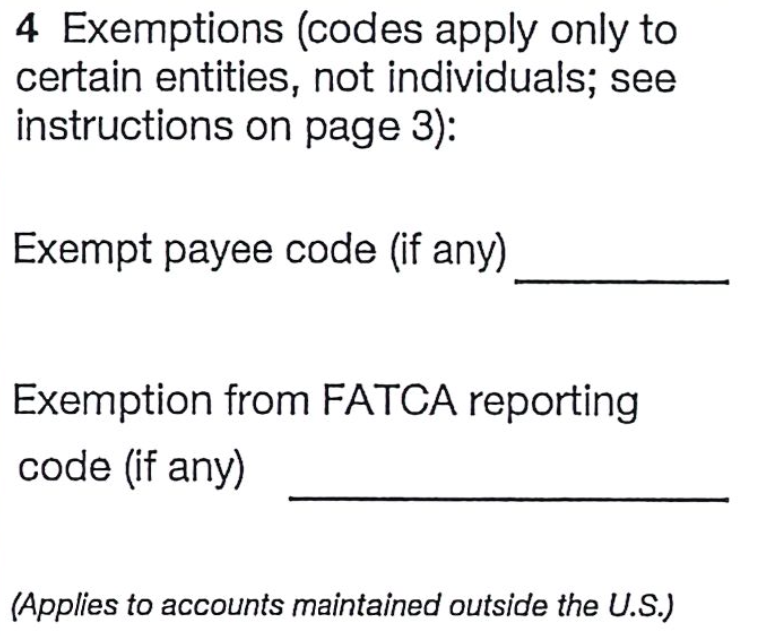Form W-9: What It Is, How to Fill It Out, and Who Needs It
Introduction to Form W-9
Form W-9 is a crucial document for independent contractors, freelancers, and businesses in the U.S. tax system. If you’ve been asked to complete one, you might wonder what it is, why it’s necessary, and how to fill it out correctly. This guide breaks down everything you need to know about Form W-9, ensuring compliance with IRS requirements while avoiding common mistakes.
Form W-9, “Request for Taxpayer Identification Number and Certification,” is an essential document for U.S. businesses engaging with contractors and vendors, ensuring accurate tax reporting and compliance with IRS regulations: 2025 W-9 form download.
This form helps in verifying taxpayer identification numbers (TINs), crucial for the preparation of 1099-NECs and other tax documents. Timely collection and verification of W-9s from service providers can prevent backup withholding and potential penalties.
Understanding when and how to use W-9s properly is key to maintaining streamlined financial operations and tax compliance. Commenda can help you in this journey, Book a call for smooth sailing.
What Is Form W-9?
Form W-9, officially known as the “Request for Taxpayer Identification Number and Certification,” is an IRS document used by businesses to request a taxpayer’s identification number (TIN) from U.S. individuals or entities. It is primarily used for tax reporting purposes, such as issuing Form 1099 for independent contractors.
The form provides details such as the name, business entity type, address, and Taxpayer Identification Number (TIN) of the individual or entity completing it.
Understanding Form W-9
This form is primarily used for tax reporting by businesses that hire independent contractors or make specific types of payments. Unlike employee payroll forms (such as Form W-4), Form W-9 does not withhold taxes but instead ensures that earnings are reported accurately to the IRS.
Why is the Form W-9 important?
- IRS compliance: The W-9 helps fulfill IRS reporting requirements, particularly for payments that require a 1099.
- Avoid backup withholding: Ensures you have the necessary documentation to avoid backup withholding from payments to vendors.
- Taxpayer Verification: Helps verify the tax status and TIN of your contractors, reducing the risk of errors in tax filings.
What Is Form W-9 Used For?
Form W-9 serves multiple purposes, including:
- Reporting payments to independent contractors (for issuing Form 1099-NEC or 1099-MISC)
- Verifying taxpayer information for financial institutions
- Establishing exempt status from backup withholding
- Tax reporting for real estate transactions, dividends, and other investment income
Who Needs to Fill Out a W-9?
Several groups are required to complete Form W-9, including:
- Independent contractors and freelancers – Individuals who provide services to businesses without being classified as employees. These individuals typically receive Form 1099-NEC at the end of the tax year, summarizing their earnings. Freelancers working in various industries, such as writing, graphic design, consulting, and software development, must provide a W-9 to their clients.
- Businesses providing services – Limited Liability Companies (LLCs), sole proprietorships, and partnerships that provide services to other businesses need to complete a W-9 form. This helps the hiring entity correctly report their payments on Form 1099-MISC or 1099-NEC.
- Real estate owners and landlords – Property owners who rent out residential or commercial spaces often need to submit a W-9 to their tenants or property management firms. This is necessary for reporting rental income to the IRS and ensuring proper tax documentation.
- Financial institutions requiring tax identification – Banks, brokerage firms, and other financial institutions may require individuals or businesses to complete a W-9 when opening accounts, especially interest-bearing accounts. This ensures that interest income is properly reported to the IRS on Form 1099-INT.
- Investors receiving taxable income – Those who earn dividends, interest, or capital gains from investments in stocks, bonds, mutual funds, or other financial instruments must submit a W-9 to their brokerage firms or investment institutions. This form ensures that taxable income is accurately reported and that backup withholding does not apply.
By providing the required information on Form W-9, individuals and businesses help ensure proper tax reporting and compliance with IRS regulations. Failure to submit the form when requested can result in backup withholding, where the IRS mandates a percentage of earnings to be withheld for tax purposes.
How to Fill Out Form W-9 (Step-by-Step Guide)
Filling out Form W-9 is a straightforward process, but accuracy is crucial to avoid delays and potential IRS issues. Each section of the form requires specific information, including your legal name, business classification, and taxpayer identification number.
Below is a step-by-step guide to ensure you complete the form correctly.

Step 1: W-9, Line 1 – Name

Enter your full legal name as it appears on your tax return. This should be your individual name if you are filing as an individual or sole proprietor. If you operate as a business entity, use the name registered with the IRS.
Step 2: W-9, Line 2 – Business Name


If you conduct business under a name different from your personal legal name, enter your “doing business as” (DBA) or trade name. This is essential for proper tax documentation, especially for sole proprietors and LLCs with trade names.
Step 3: W-9, Line 3 – Federal Tax Classification

Select the correct classification that applies to you:
- Individual/Sole Proprietor – Use this if you operate as an individual or sole proprietor.
- Single-Member LLC – If your LLC is disregarded for tax purposes, select “Individual/Sole Proprietor.”
- C Corporation or S Corporation – Businesses registered as corporations should select the appropriate box.
- Partnership – Select this if your business is a partnership.
- Trust/Estate – If completing the form on behalf of a trust or estate, choose this option.
Step 4: W-9, Line 4 – Exemptions

Enter any applicable exemptions from backup withholding or FATCA reporting. If you are exempt, provide the exemption code found in the IRS instructions for Form W-9. Most individuals and small businesses do not qualify for exemptions.
Step 5: W-9, Lines 5-6 – Address Information

Line 5 & 6, provides your address(number, street, and Apartment or suite number). This is where the requester of the Form W-9 will mail your information returns. If this address differs from the one the requester already has on file, enter “NEW” at the top. If a new address is provided, there is still a chance the old address will be used until the payor changes your address in their records.
Provide your current mailing address, ensuring it matches IRS records and any official documentation related to your taxpayer identification. This is where the requester will send tax-related documents such as Form 1099.
Step 6: W-9, Line 7 – Account Numbers (If Applicable)

If the requester needs an account number associated with your tax reporting, enter it here. This is often used by financial institutions or businesses for record-keeping purposes.
Step 7: W-9, Part I – Taxpayer Identification Number (TIN)

Your TIN is required for tax reporting. Choose the appropriate type:
- Social Security Number (SSN) – A unique nine-digit number that identifies U.S. citizens and certain residents. The U.S. Social Security Administration (SSA) issues SSNs. If you are filing as an individual or sole proprietor, provide your SSN.
- Employer Identification Number (EIN) – A federal tax ID number for businesses, tax-exempt organizations and other entities. If your business is a corporation, partnership, or multi-member LLC, enter your EIN.
- Applying for an EIN? – If you don’t yet have an EIN, you can apply for one through the IRS website. Leave this field blank until you obtain your EIN.
Step 8: W-9, Part II – Certification
To complete the form, sign and date it, certifying that:
- The TIN provided is correct.
- You are not subject to backup withholding (unless specified).
- You are a U.S. citizen or resident alien.
Ensure that you sign in the appropriate section, as failure to sign may result in an invalid W-9 submission.
Who Must Complete a W-9 Form?
Form W-9 must be completed by individuals and businesses that receive payments subject to IRS reporting requirements.
Additionally, the information provided on Form W-9 is crucial for ensuring accurate tax reporting and compliance. When a payer requests a W-9, it is typically because they need to issue a Form 1099 to report the payments made to the recipient.
Failing to provide a W-9 when required can lead to backup withholding, where the payer withholds 24% of the payment for tax purposes and remits it to the IRS.
This includes a wide range of taxpayers, such as independent contractors, freelancers, business owners, landlords, and investors. The purpose of the W-9 is to provide the requester (payer) with the correct Taxpayer Identification Number (TIN) for tax reporting purposes.
A W-9 is not required for regular employees, as they receive a W-4 instead. Additionally, certain tax-exempt organizations and international entities may not need to complete a W-9 but may be required to provide a different tax form, such as Form W-8BEN for foreign individuals.
Special Considerations When Filing Form W-9
1. Signing Form W-9
- The signee must be an authorized representative.
- Ensure that the signature is valid and matches official records.
2. Returning Form W-9
- Submit the completed form directly to the requesting entity.
- Do not send Form W-9 to the IRS.
3. Failure to Remit Form W-9
- Failure to provide a W-9 can result in backup withholding of 24% on payments received.
- The IRS may impose additional penalties for non-compliance.
4. Form W-9 vs. Form W-4
- W-9 is used for independent contractors.
- W-4 is used by employees to set up tax withholding.
5. W-9 vs. 1099 Tax Forms: What’s the Difference?
- W-9 collects taxpayer information.
- 1099 reports earnings paid to the individual or business.
Is a W-9 Used for Self-Employed Individuals?
Yes, freelancers and self-employed professionals use W-9 forms to provide their tax details for income reporting.
What Happens If I Do Not Provide a Form W-9?
- The payer may apply backup withholding.
- The IRS may impose penalties for non-compliance.
7 Common Mistakes to Avoid on Form W-9 in 2025
- Not collecting form W-9 in time: Failure to obtain Form W-9 before making payments can lead to compliance issues.
- Incorrect or incomplete forms: Forms filled out inaccurately or missing essential information can result in reporting errors.
- Failing to update information: Not regularly verifying or updating the information provided by long-term contractors or vendors.
- Using an incorrect TIN
- Not signing the form
- Incorrectly classifying the business entity
- Sending the form to the IRS instead of the requester
Frequently Asked Questions About Form W-9
1. Do I Need to Renew My W-9 Every Year?
No, you do not need to submit a new W-9 every year unless your information changes. However, if your name, business structure, Taxpayer Identification Number (TIN), or exempt status changes, you must provide an updated form to the requester as soon as possible. Businesses may also request an updated W-9 periodically to ensure they have the correct information on file.
2. What Happens If I Refuse to Fill Out a W-9?
If you refuse to provide a completed W-9 form when requested, the business or individual paying you may be required by the IRS to withhold 24% of your earnings as backup withholding. This withheld amount is sent directly to the IRS as a prepayment of your tax obligations. Additionally, refusing to provide a W-9 may result in delays in receiving your payments or even termination of contracts with certain businesses.
3. Can I Submit Form W-9 Online?
Yes, Form W-9 can be submitted electronically if the requester allows it. Many companies use secure online portals or electronic document signing platforms to collect W-9 forms. If submitting electronically, ensure the method complies with IRS guidelines, such as using an encrypted and secure platform. Avoid sending W-9 forms via unsecured email to protect sensitive information.
4. Do I Need to Fill Out a W-9 If I Already Paid Taxes?
Yes, even if you have already paid taxes on your income, you may still need to provide a W-9. The form is used by businesses and financial institutions to report payments made to you on a Form 1099. This is essential for tax reporting and verification purposes. Not providing a W-9 when requested may result in backup withholding and issues with tax filings.
5. Is There a Penalty for Providing False Information on Form W-9?
Yes, providing false information on Form W-9 can lead to significant penalties. If you intentionally provide incorrect details, such as a false TIN, you may face fines of up to $500 or more, depending on the violation. In cases of deliberate tax fraud, additional IRS penalties or legal consequences, including criminal charges, may apply. Always ensure the accuracy of the information provided on the form.
6. Do I Need to Complete a W-9 If I’m a Freelancer?
Yes, freelancers and independent contractors must submit a W-9 to any business or client that pays them $600 or more in a tax year. The business will use this form to prepare a 1099-NEC (Nonemployee Compensation) form, which reports your earnings to the IRS. Even if your earnings do not meet the $600 threshold, some companies may still require a W-9 for their records.
7. How Do I Fill Out a W-9 as an LLC?
If you operate as a Limited Liability Company (LLC), you must select the correct tax classification on the form.
Single-Member LLC: Check the “Individual/Sole Proprietor or Single-Member LLC” box and provide your SSN or EIN.
Multi-Member LLC or Partnership: Check the “Partnership” box and provide your EIN.
LLC Taxed as a Corporation: If your LLC elects to be taxed as an S-Corp or C-Corp, select the appropriate box and provide the business’s EIN.
8. How Do You Fill Out a Form W-9 if You’re a Sole Proprietor With an EIN?
As a sole proprietor with an EIN, you should use your legal personal name in Line 1 and enter your business name (if applicable) in Line 2. On Line 3, select “Individual/Sole Proprietor or Single-Member LLC.” In Part I, you may provide either your SSN or EIN. However, the IRS generally recommends using your SSN unless the requester specifically requires an EIN.
9. How Do You Fill Out a Form W-9 if You’re a Newly Established Business Entity Without an EIN?
If you recently started a business and do not yet have an EIN, you should apply for one through the IRS website. In the meantime, leave the TIN section blank or provide your SSN if the business is a sole proprietorship. Once you receive your EIN, you can submit an updated W-9 with the correct information.
10. How Do You Fill Out a Form W-9 if You’re a Resident Alien?
Resident aliens who do not qualify for a Social Security Number (SSN) must provide an Individual Taxpayer Identification Number (ITIN) instead. To obtain an ITIN, you must file Form W-7 with the IRS. When completing Form W-9, enter your legal name and ITIN in the TIN field. If you are a non-resident alien, you may need to complete Form W-8BEN instead of Form W-9, depending on your tax status.
Conclusion
Form W-9 is a fundamental document for tax reporting, primarily for independent contractors, businesses, and financial institutions. Filling it out correctly helps avoid IRS penalties and ensures smooth financial transactions. Always verify the information before submitting it to avoid compliance issues.













